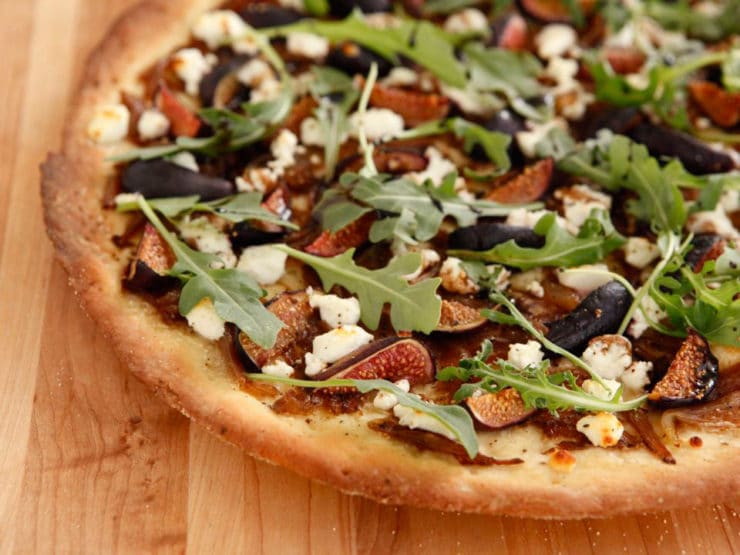
For as much as I enjoy eating pizza, you’d think I would make it regularly. I don’t! It’s just one of those things I never really got around to mastering in all these years of home cooking. Last week, when I asked you what I should do with all of the figs on my overflowing fig tree, many of you asked for a fig and goat cheese pizza recipe. Great idea! But I’m not a pizza expert, not even close… and you know that I only want the best recipes on this site. I’m not about to experiment on you! So, I called for help. My assistant Ashley’s friend Gary happens to be a culinary school graduate… AND he worked in a restaurant that served lots and lots of pizza. Score! In fact, Ashley and Gary met while working together in that very restaurant back in their home state of Indiana.
This is Gary, peppering our pizza. Don’t you love his hat?

Please excuse the drapey sheets in the background. My breakfast nook doubles as a photography studio. Don’t judge.
I told Gary I wanted to do a goat cheese pizza with fresh figs, caramelized onions, and fresh arugula with a maple-balsamic reduction drizzled on top. The toppings were easy, but I needed help with the crust. I wanted something simple, tried and true, and THIN… we only indulge in thin crust pizza nowadays, as I like to taste the toppings more than the bread (and we can have more pieces without feeling so guilty about the carbs). I also like the crunchy edges of a thin crust pizza. Together with Gary, we came up with something super simple and scrumptious. Don’t fear the pizza… anybody can do this!
For the caramelized onions, we were inspired by Melissa Clark’s genius method for getting sweet, intensely flavored onions in less than half the time. The process involves starting the onions in a dry pan. Sounds strange? Maybe, but by golly, it works! Melissa’s method is somewhat sparse on details (pan temp? time?), so I wrote out the details based on my experimentation below. I also added a short deglaze with water after the initial browning, which helped to unstick the onions from the pan and cut down on the amount of oil I needed to use to get the onions fully caramelized. Of course, you can caramelize them the old fashioned way if you want to… this method just makes the process go faster, and requires less oil.
I added a bit of maple syrup to the balsamic reduction, which gave it a sweet depth that paired beautifully with the figs. When reducing the balsamic you’ll be left with more than enough for two pizzas, so if you want to double the rest of the recipe, go for it– no need to make extra balsamic. You could also make a nice green salad and drizzle that extra balsamic on top. Delish! Make this for somebody you love, and expect many, many kisses in return.
Recommended Products:
We are a participant in the Amazon Services LLC Associates Program, an affiliate advertising program designed to provide a means for us to earn fees by linking to Amazon.com and affiliated sites. As an Amazon Associate I earn from qualifying purchases.
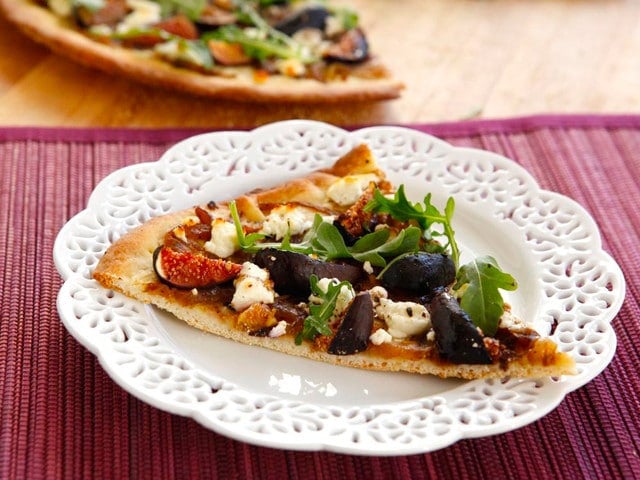
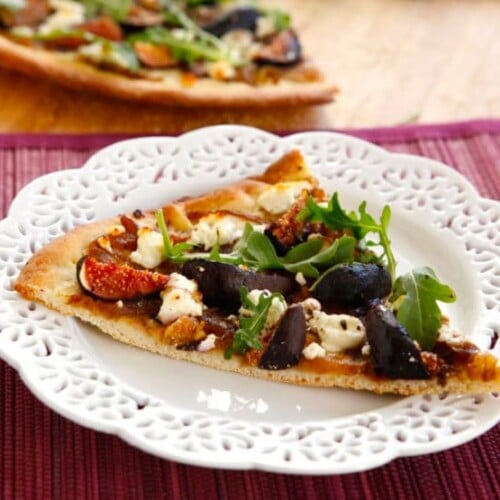
Fig and Goat Cheese Pizza with Maple Balsamic Reduction
Ingredients
Crust
- 1/3 cup warm water (not hot!)
- 1 teaspoon sugar, honey or agave will also work well
- 1 teaspoon active dry yeast
- 1 cup all purpose flour
- 1 teaspoon kosher salt
- 1 tablespoon olive oil, plus more for brushing onto crust
- 1 medium onion, sliced
- 1/4 cup water
- 1 tablespoon olive oil
- 1/2 teaspoon kosher salt
- 1 cup fresh figs, sliced into sixths
- 1/2 cup fresh arugula
- 3 ounces goat cheese
- Salt
- Freshly ground black pepper
- Corn meal
Balsamic Reduction
- 1/2 cup good quality balsamic vinegar
- 1 tablespoon maple syrup
NOTES
Instructions
- To make dough: Combine water, sugar and yeast in a small bowl. Let sit until frothy, about 10 minutes. This will activate the yeast-- it should look foamy. If it doesn't, your yeast may be expired... go get some fresh yeast!

- In a large bowl, combine flour and kosher salt. Add the yeast mixture along with the olive oil and mix until thoroughly combined.

- Transfer dough to a floured surface. Knead the dough for 5 minutes and shape into a ball.

- Place the dough into an oiled mixing bowl and turn to coat. Cover and allow to rise for 1 ½ - 2 hours, or until it has doubled in size.

- Meanwhile, make the balsamic reduction and caramelized onions. To make the balsamic reduction, add the balsamic vinegar and maple syrup to a small saucepan and cook on medium-low heat until the liquid has reduced to ¼ its original volume, roughly 15 - 20 minutes. Check and stir regularly to make sure it doesn't burn.

- When finished, the reduction will be very dark in color, similar to chocolate syrup.

- To make caramelized onions, place sliced onions in a dry pan over medium-high heat and cover with a lid.

- Check and stir regularly, until a good amount of color has developed, about 5-7 minutes. Deglaze your pan using the ¼ cup of water, stir the onions well and be sure to scrape up the brown bits that have collected on the bottom of the pan. Once the water has cooked off, add 1 tbsp olive oil and salt and continue to cook the onions about another 5 minutes. When finished, the onions should have a nice deep dark brown color and a sweet smell.

- Once the dough has doubled in size, you are ready to assemble and bake the pizza. Preheat oven to 450 degrees and place a pizza stone or sheet pan into the oven to allow it to come to temperature as well. (A pizza stone is recommended; they are a great investment if you're planning to make a lot of pizza, because they help the crust bake evenly and crisply).Punch down the dough ball down flat and place on a floured surface. To roll out, start in the middle and roll towards the edges, giving a quarter turn with each back-and-forth motion. Add more flour as needed to prevent sticking. Roll out to roughly 13” across.

- Poke several small holes with a fork in the bottom of the crust.

- Sprinkle a good amount of corn meal onto a lightweight cutting board before transferring your rolled dough to the new surface for topping assembly. Brush the crust with olive oil.

- To slice figs, first remove stems, then cut in half. Cut each half into thirds. Then sprinkle the caramelized onions, sliced figs, and goat cheese across the top of the pizza. Be sure to sprinkle the toppings evenly.

- Carefully transfer the assembled pizza to your preheated pizza stone or sheet pan. Bake for 10-12 minutes or desired doneness.

- Allow the pizza to cool slightly, then top with fresh arugula and drizzle with the balsamic reduction. Slice, serve, and enjoy!

Nutrition

tried this recipe?
Let us know in the comments!
Other Great Recipe Ideas
The Pioneer Woman – Tomato Basil Pizza, Two Ways
Weelicious – Green Machine Pizza
Cookin’ Canuck: Vegetarian Naan Pizza with Eggplant and Cilantro

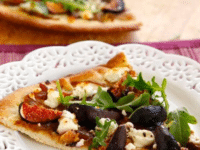
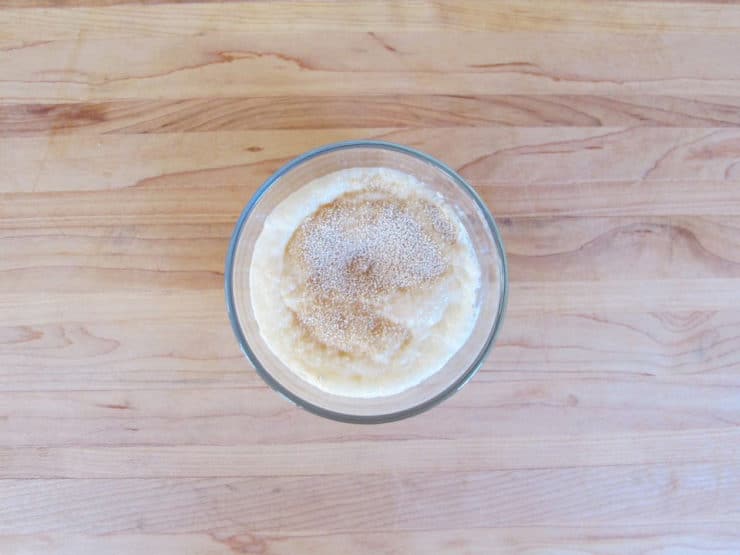
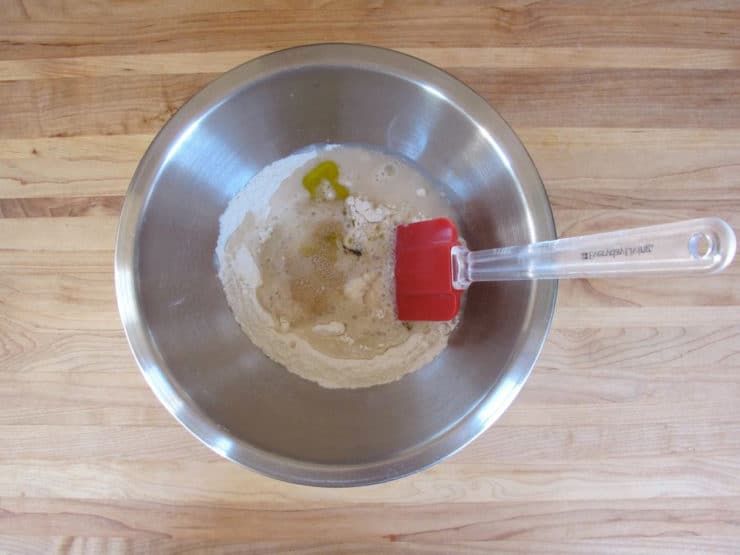
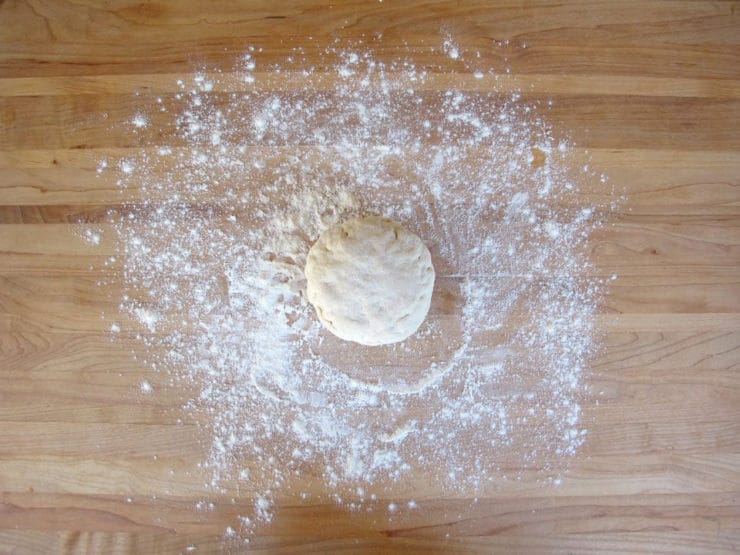
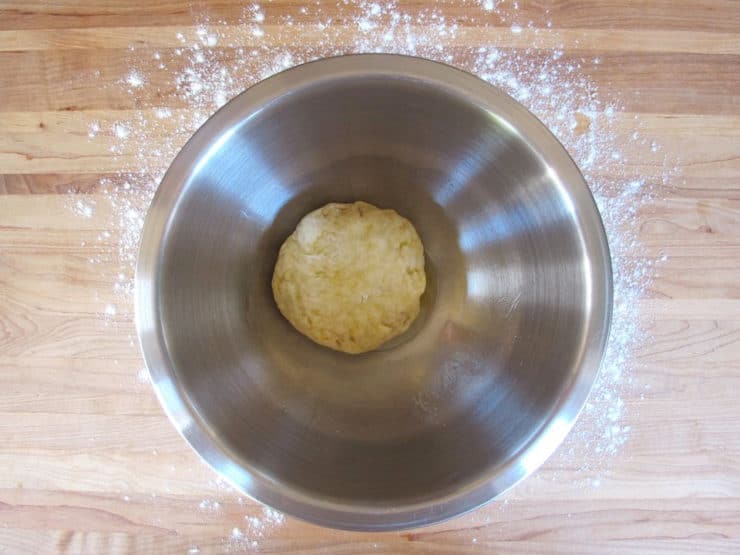
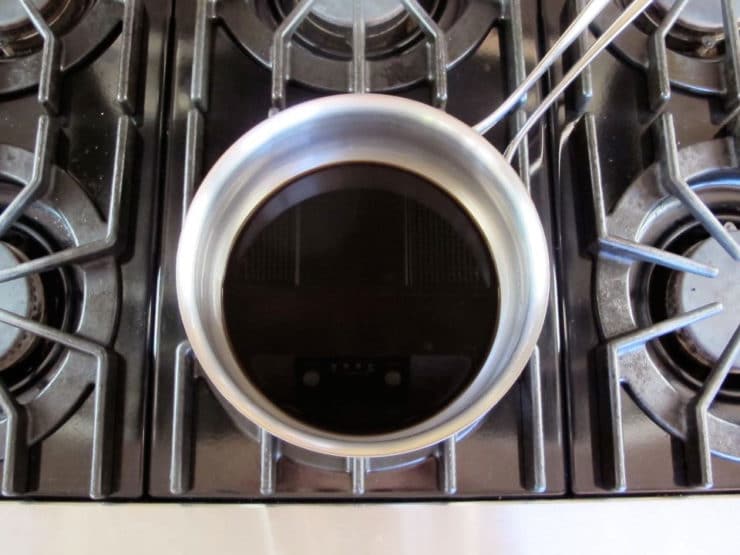
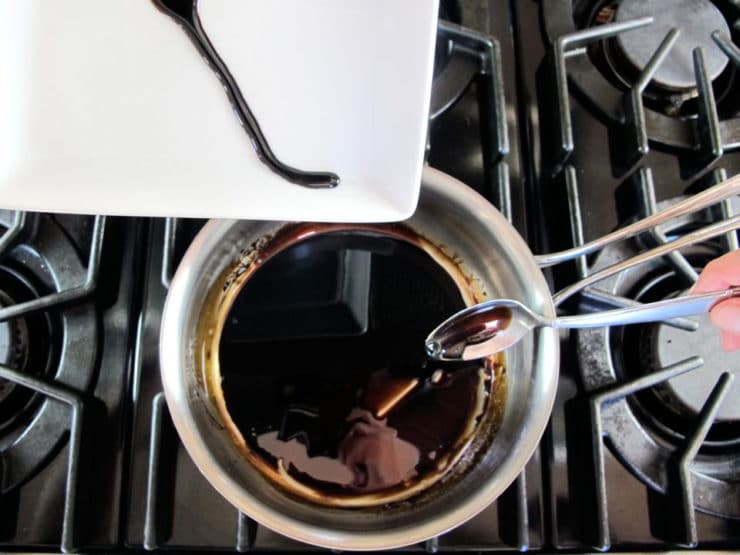
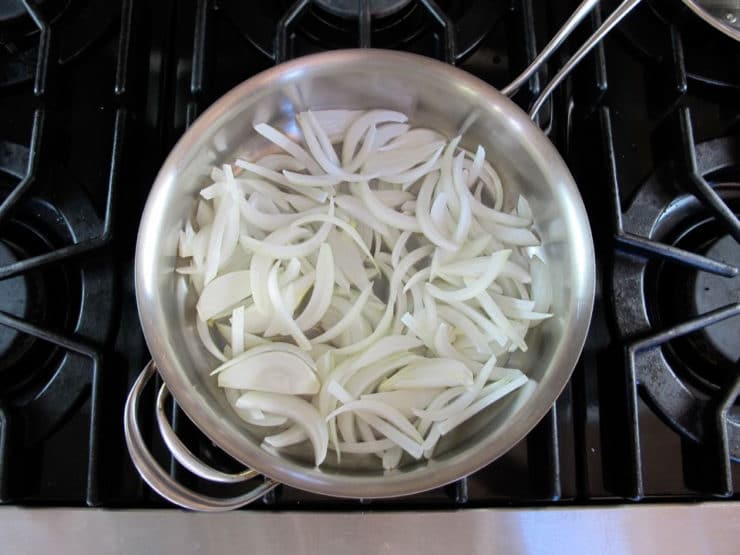
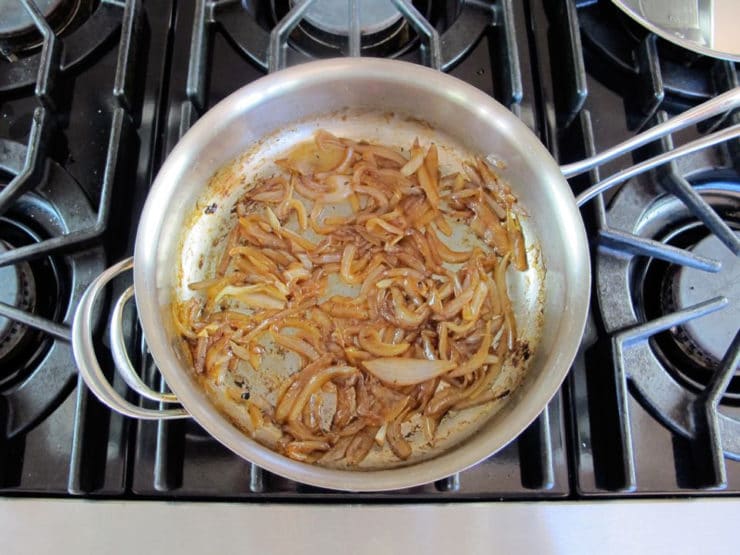
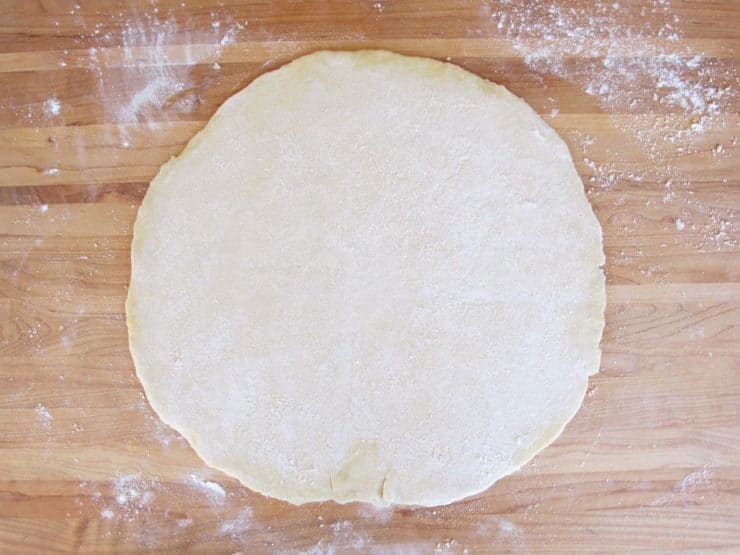
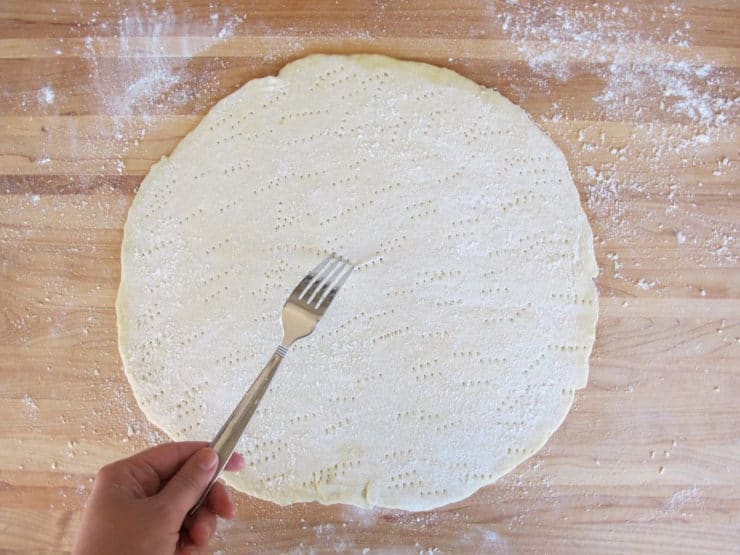
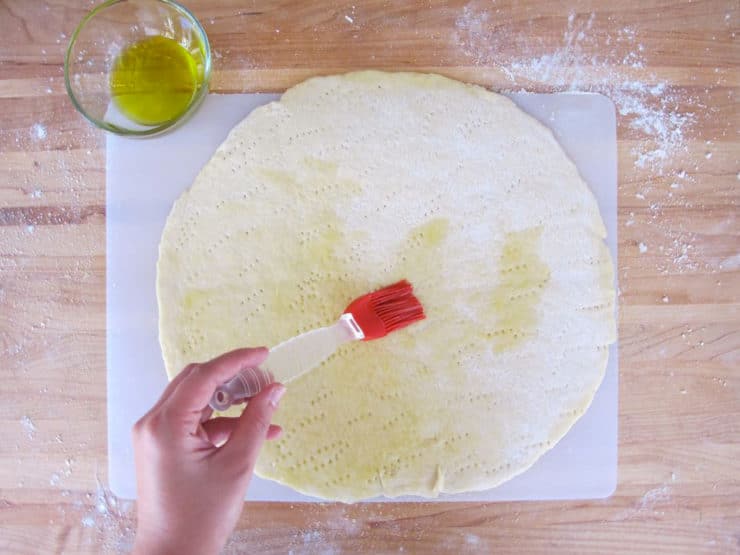
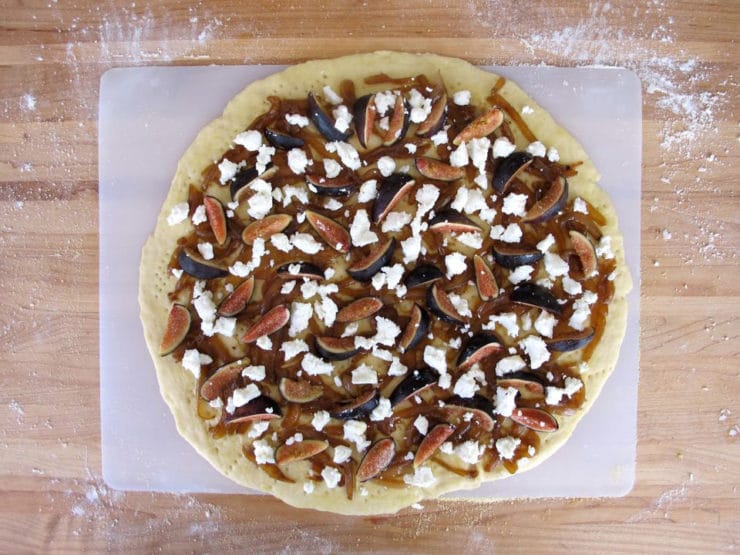



I have made this pizza several times now with sight variations- depending on what I have in the fridg.
this is a wonderful pizza…..it is one of the gourmet pizzas that you find at a cucina.
such a delight!
AWESOME!! Cheated as I was short on time and used naan flatbread…& didn’t have access to fresh figs in winter, so used dried….used fig jam to coat bottom…then drizzle afterward as you suggest with maple balsamic reduction….yummy…will definitely make again!
My other half said its the best goats cheese & fig pizza he’s ever had .thank you ❤
This was so good. My balsamic reduction didn’t go as planned. It became like candy. The flavors were amazing. Thank you.
That has happened to me before! It can take a few tries to get the texture exactly right. Just remember that it continues thickening as it cools.
This recipe is amazing! Made it last night, lots of love for it! Never made a pizza before myself but this recipe made it very easy! Great recipe Tori! Love this
OMG!!! So GOOD
I love this recipe! One of my favorites. Anyone know if it works well on matzo for Passover?
I had never made a pizza from scratch, and chose this as my first recipe. Absolutely delicious; one of the best dishes I have ever made! Thank you for sharing this.
I like the idea of the balsamic and maple syrup reduction. Sounds like a great combination of flavors!
Made this pizza for breakfast. Was fantastic. Love the reduction. Didn’t have arugula so used spinach and added prosciutto. Also made homemade 100% whole wheat pizza dough.
Absolutely scrumptious. I did not keep an eye on the balamic reduction as you advised–burned it badly and instead served with good balsamic vinegar at the table. Used local York Hill black pepper-encrusted goat cheese. Replaced ¼ cup of white flour with whole wheat. Looking forward to having with that balsamic reduction the next time I find fresh figs in Maine! Thank you for great recipe!
Made pizza last night using this recipe as inspiration, since I didn’t have fresh figs – had fig jam. I used the quickie method to caramelize the onions, and it worked great! Never going back to the old way, so thank you for that. Balsamic reduction also worked great. My pizza was too sweet, so when I make it again I will use less fig jam. Underestimated its sweetness. Wish I could add a photo.
I made this tonight and was very generous with the figs and served it with torn taleggio as it cooled down. We both agreed it was somewhere between sweet and savoury. I can recommend the taleggio with its pungency which helps cut the sweetness. And although I had no arugula (we call it rocket), I see why its bitterness is an essential ingredient.
Just made it and it was beyond delicious! Especially from our figs in the back yard. Thanks for sharing!!
Fabulous! Great to hear that Caroline. Today I posted a tutorial for grilling pizza if you’re interested: https://toriavey.com/grill-pizza-stone-thin-crust-recipe/
We just made this pizza and it was really, really good. Thank you for the great idea!
Great! Very happy you enjoyed it. 🙂
Thanks for this Tori – love the idea for caramelizing onions gonna test this out!
What kind of goat cheese did you use? I make my own goat cheese’s
Regular soft goat cheese, unflavored without herbs.
there a re many varieties of goat cheese,there is no such thing as regular goat cheese. Do you mean cherve?
Alkymist, chevre means simply goat cheese. While you are correct there are many forms of goat cheese, they are all known as chevre. Generally speaking when an American cook refers to goat cheese they are speaking about the soft form of goat cheese rather than harder cheeses or goat brie. I am referring to that type of cheese here– the soft, slightly crumbly kind. You could also use goat feta, which would be saltier, although I prefer the slight tangy and creaminess of regular soft goat cheese on this particular pizza. Enjoy!